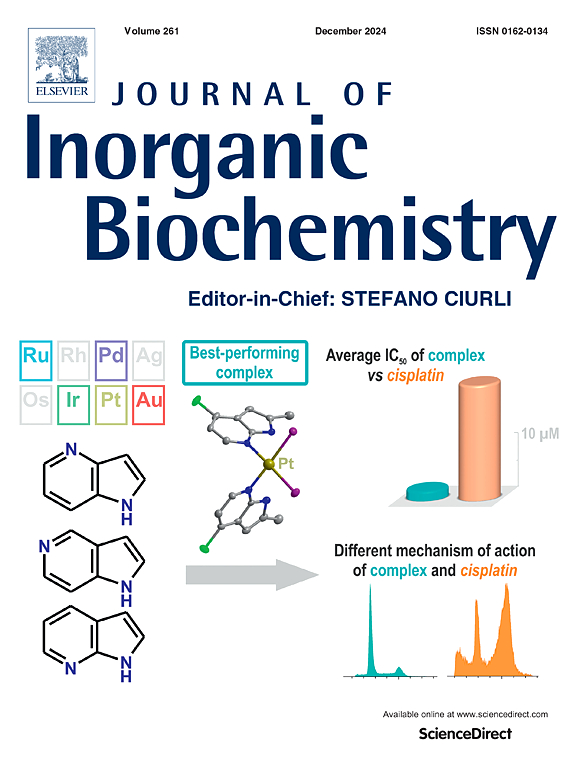靶向与金属配合物不匹配的DNA
IF 3.2
2区 化学
Q2 BIOCHEMISTRY & MOLECULAR BIOLOGY
引用次数: 0
摘要
DNA错配是由复制过程中的错误或DNA损伤引起的非沃森-克里克碱基对。通常通过错配介导修复(MMR)途径修复,在MMR缺陷的癌症中,如结直肠癌和子宫内膜癌亚群,错配持续存在并积累,提供生化脆弱性,为小分子干预创造了目标。本综述探讨了采用铑(III),钌(II)或铂(II)中心的金属配合物如何利用这种分子区别优先结合DNA中的错配位点。我们讨论了这种相互作用的潜力,作为下一代治疗和成像探针的基础,其中金属配合物和相关配体设计的独特结构,电子和光物理性质提供了高选择性区分典型和错配DNA的机会。本文章由计算机程序翻译,如有差异,请以英文原文为准。
Targeting DNA mismatches with metal complexes
DNA mismatches are non Watson-Crick base pairs that arise from errors during replication or are the result of DNA damage. Normally repaired by the mismatch mediated repair (MMR) pathway, in cancers deficient in MMR, such as subsets of colorectal and endometrial cancers, mismatches persist and accumulate, providing a biochemical vulnerability creating a target for small-molecule intervention. This review explores how metal complexes employing rhodium(III), ruthenium(II) or platinum(II) centres can exploit this molecular distinction to preferentially bind mismatch sites in DNA. We discuss the potential of this interaction to act as a foundation for next-generation therapeutics and imaging probes where the unique structural, electronic, and photophysical properties of metal complexes and associated ligand design offer opportunities to differentiate between canonical and mismatched DNA with high selectivity.
求助全文
通过发布文献求助,成功后即可免费获取论文全文。
去求助
来源期刊

Journal of Inorganic Biochemistry
生物-生化与分子生物学
CiteScore
7.00
自引率
10.30%
发文量
336
审稿时长
41 days
期刊介绍:
The Journal of Inorganic Biochemistry is an established international forum for research in all aspects of Biological Inorganic Chemistry. Original papers of a high scientific level are published in the form of Articles (full length papers), Short Communications, Focused Reviews and Bioinorganic Methods. Topics include: the chemistry, structure and function of metalloenzymes; the interaction of inorganic ions and molecules with proteins and nucleic acids; the synthesis and properties of coordination complexes of biological interest including both structural and functional model systems; the function of metal- containing systems in the regulation of gene expression; the role of metals in medicine; the application of spectroscopic methods to determine the structure of metallobiomolecules; the preparation and characterization of metal-based biomaterials; and related systems. The emphasis of the Journal is on the structure and mechanism of action of metallobiomolecules.
 求助内容:
求助内容: 应助结果提醒方式:
应助结果提醒方式:


